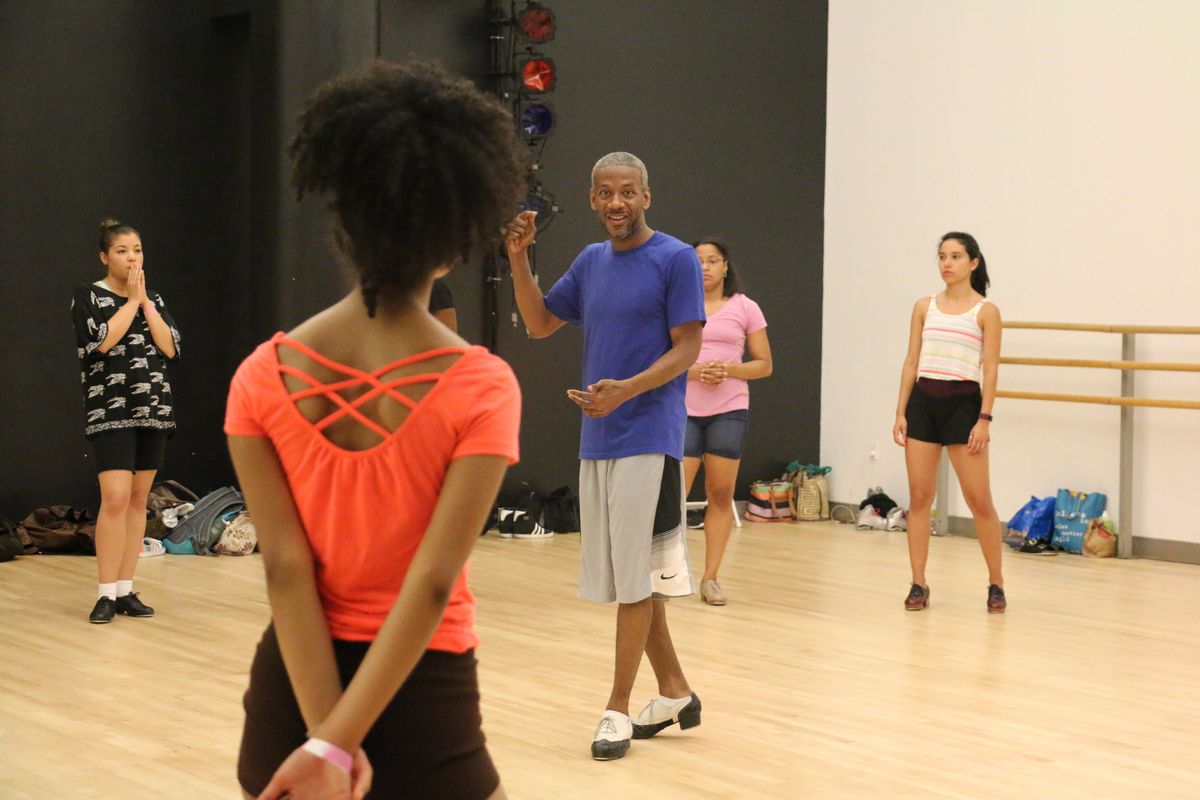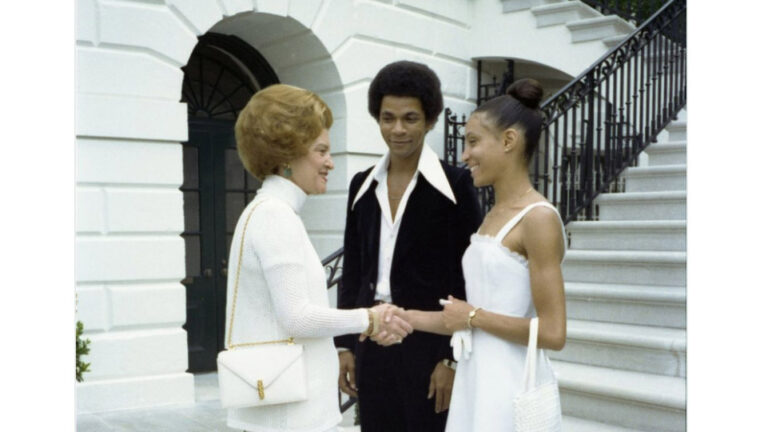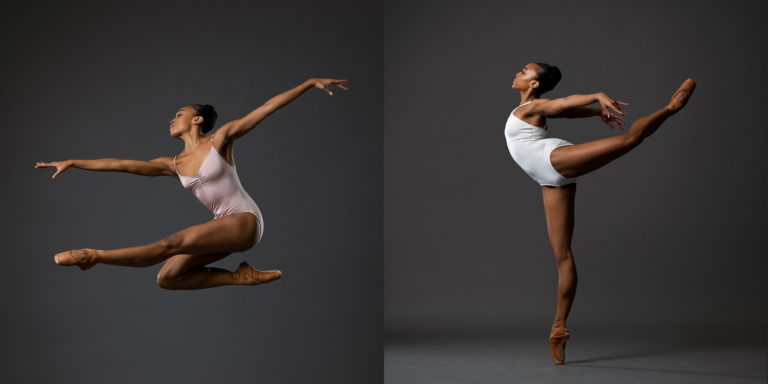
Marshall Davis Jr.’s introduction to tap dance began at 10 years old at African Heritage Cultural Arts Center, where his father is director, in Miami, Florida. Training began in sneakers and dress shoes that Davis Jr. did his best to get sound out of. “My father was reluctant to invest in tap shoes, because he thought it was likely I would change my mind about dancing,” he says. But it didn’t take long before Davis Jr.’s passion for tap became undeniable, and his father bought him his first pair of tap shoes. Just one year later, Davis Jr. became the 1989 Florida winner for the Tri-Star Pictures Tap Day contest, a promotion for the movie Tap, starring Gregory Hines and Sammy Davis Jr. Through that experience, a new tap-dancing future was opened.
From that point on, Marshall Davis Jr. began working with the greats. He attributes much of his success to his mentor, tapper Steve Condos of the Condos Brothers, but has also worked with James “Buster” Brown, Edwin Holland, Paul Kennedy, Ted Levy, LaVaughn Robinson and Sam Weber. Davis Jr. was a part of the Tony Award–winning Broadway production of Bring in ‘Da Noise Bring in ‘Da Funk, choreographed by Savion Glover and directed by George C. Wolfe, and today is an adjunct professor of tap at Queens College and a teacher at the Ailey Extension.
Here, Davis Jr. talks about his relationship with his educators, and how he infuses their lessons into his own teaching at the Ailey Extension.
On working with Condos “After I got home from the Tri-Star Pictures Tap Day contest, my mom woke me up and said, ‘Get your shoes and get dressed; we are getting ready to go.’ She didn’t tell me where we were going and drove me to a house I’d never been to before. Steve Condos opened the door, and my life was forever changed. I began working with him on a one-on-one basis, which was just amazing. From the first lesson he told me, ‘If you think you are good now, imagine 10 years from now if you to continue to practice.’ He taught me that progress never stops. You have to continue to build, and practice, and progress.”
On his teaching inspiration “For me, teaching is sharing all of the stuff I have learned from Steve, and Jimmy Slyde, and Harold [“Stumpy] Cromer—from all the people I have ever worked with and studied under. This isn’t the Marshall Davis method; this is me passing on what I have learned from others. That is my approach to teaching.”
On helping students love and embrace tap “I try to help them find themselves though the art form. Don’t try to imitate me. Tap is sound; sound is language and expression and communication. Once you have learned how to utilize it, just as you do with any other language, you’re able to express yourself through it. You get to choose how you want to do that for yourself. Once they understand that within the context of music, it is not about me teaching them; it’s about them discovering who they are. That’s when they love it.”
On his favorite teaching tools “I face away from the mirror so my students worry about what they sound like rather than what they look like. I practice counting so we understand the context of the rhythm and how the sound is being utilized, and I use tap metaphors as they pertain to language. For example, I tell them words can sound the same yet mean different things. You could hear buy, and think of purchasing something, or bi meaning two, like bilingual. Similarly, a step can do two things. A shuffle doesn’t need to have the same rhythm, and a cramp doesn’t need to have the same sound. You can mix it up just like you do with language.”




